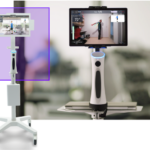Struggling with shoulder pain? Learn about evidence-based treatments that reduce pain, improve mobility, and prevent future injury so you can get back to your daily activities.
Shoulder pain can make simple tasks—like reaching for a shelf, throwing a ball, or even getting dressed—difficult and painful. Whether it’s due to an injury, overuse, or poor posture, shoulder pain affects your daily life more than you might realize. The shoulder joint is one of the most mobile joints in the body, but its complex structure also makes it prone to injury.
At Victory Physical Therapy, we understand the impact shoulder pain can have on your life. We offer evidence-based treatment for shoulder pain that’s designed to address the root cause, helping you recover faster and prevent future injury. Let’s explore how the right treatment can restore your shoulder’s function and strength.
How Shoulder Pain Affects Your Function
Your shoulder is a highly flexible joint, allowing you to perform a wide range of motions, from lifting and reaching to rotating and throwing. However, this flexibility comes with a price—shoulder pain can significantly limit your ability to perform daily tasks. Here’s how shoulder pain impacts your function:
- Lifting and Reaching: Shoulder pain often makes it difficult to lift objects, especially overhead. This can interfere with everything from carrying groceries to putting items on high shelves.
- Throwing and Rotating: Athletes and active individuals often struggle with movements like throwing a ball or swinging a racket. Shoulder pain can make these movements feel weak or uncomfortable, impacting performance.
- Basic Activities: Even routine activities like brushing your hair, reaching for a seatbelt, or getting dressed can become painful when your shoulder is compromised.
Left untreated, shoulder pain can lead to weakness, reduced range of motion, and compensatory movements that strain other parts of your body, like your neck and back. That’s why it’s important to seek treatment early to prevent the pain from worsening.
- Physical Therapy: A Proven Path to Shoulder Pain Relief
When it comes to shoulder pain, physical therapy is one of the most effective, evidence-based treatments available. Our team at Victory Physical Therapy creates personalized rehabilitation plans to target your specific shoulder condition, whether it’s a rotator cuff injury, impingement, frozen shoulder, or tendonitis.
Here’s what a physical therapy plan for shoulder pain might include:
- Improving Mobility: If your shoulder pain is limiting your range of motion, we’ll work with you on gentle stretches and movement exercises to help restore flexibility and joint mobility.
- Strengthening Exercises: Weak muscles can lead to imbalances and poor shoulder mechanics. We’ll guide you through strengthening exercises for your rotator cuff muscles and the muscles surrounding your shoulder blade to improve stability and reduce pain.
- Functional Training: If your pain is affecting daily tasks or athletic performance, we’ll incorporate functional exercises that mimic your usual activities. This helps you regain strength and confidence in your shoulder movements.
Studies show that a comprehensive physical therapy program can significantly reduce shoulder pain and improve long-term function, helping you avoid more invasive treatments like surgery.
- Strength and Stability: Key to Shoulder Health
One of the most important factors in preventing and treating shoulder pain is building strength and stability in the muscles that support your shoulder joint. Your shoulder relies on a complex network of muscles, tendons, and ligaments to function properly, and when these structures become weak or imbalanced, you’re at greater risk of injury.
At Victory PT, we focus on:
- Rotator Cuff Strengthening: The rotator cuff muscles play a vital role in stabilizing the shoulder. Weakness in these muscles can lead to pain and dysfunction. We’ll prescribe targeted exercises like external rotations and shoulder presses to strengthen the rotator cuff and protect your shoulder joint.
- Scapular (Shoulder Blade) Stabilization: The muscles that control your shoulder blade are critical for proper shoulder mechanics. Strengthening these muscles helps ensure that your shoulder blade moves smoothly, reducing stress on the joint itself.
- Postural Correction: Poor posture, especially when sitting or standing for long periods, can lead to shoulder pain. We’ll teach you exercises to strengthen your upper back and correct your posture, reducing strain on your shoulder.
By addressing both strength and stability, we help reduce your pain and improve your overall shoulder function, whether you’re dealing with an old injury or preventing future ones.
- Restoring Range of Motion
Shoulder pain often limits your range of motion, making it difficult to perform even the simplest tasks. Whether your pain is due to a stiff shoulder, rotator cuff injury, or frozen shoulder, restoring your shoulder’s full range of motion is essential for a successful recovery.
Here’s how we approach improving mobility:
- Stretching Exercises: We’ll guide you through gentle stretching exercises that target the muscles and tendons around your shoulder. Stretching helps release tension, improve flexibility, and reduce stiffness in the shoulder joint.
- Joint Mobilization: If your shoulder joint itself is stiff, we may incorporate manual techniques that encourage joint movement and flexibility, helping you regain full motion over time.
- Progressive Loading: As your mobility improves, we gradually increase the load and intensity of your exercises. This ensures that your shoulder becomes stronger and more resilient without overloading it too soon.
Improving your range of motion is a critical part of evidence-based treatment for shoulder pain, allowing you to return to your normal activities pain-free.
- Preventing Future Shoulder Injuries
Once your shoulder pain has improved, preventing future injuries becomes a key focus. Many shoulder problems are caused by overuse, muscle imbalances, or poor mechanics, so we emphasize preventive strategies to keep your shoulder healthy and pain-free.
Here’s what we focus on to help you avoid re-injury:
- Correct Movement Patterns: Whether you’re lifting weights, playing sports, or performing daily activities, it’s important to use proper form. We’ll teach you correct movement patterns to reduce stress on your shoulder and prevent injury.
- Strength Maintenance: Even after you’ve recovered, it’s crucial to continue strengthening the muscles that support your shoulder. We’ll provide you with a maintenance exercise program to keep your shoulder strong and stable.
- Posture Awareness: Poor posture is a common cause of shoulder pain, especially for people who spend long hours sitting at a desk. We’ll help you develop habits that promote good posture and reduce the strain on your shoulders.
By focusing on prevention, you can maintain the progress you’ve made and reduce the likelihood of shoulder pain returning.
Conclusion: Get Back to Pain-Free Movement
Shoulder pain doesn’t have to hold you back from doing the things you love. With the right evidence-based treatment, you can regain your strength, mobility, and confidence. At Victory Physical Therapy, we’re committed to helping you recover from shoulder pain with a personalized approach that addresses the root cause of your discomfort.
Whether you’re an athlete recovering from an injury or someone dealing with everyday shoulder pain, we’re here to help you every step of the way.
Ready to take the next step toward shoulder pain relief? Contact us today to schedule a consultation, and let’s build a personalized treatment plan that gets you back to feeling your best.
Call to Action: Call us at 503-693-8105 or visit HERE to schedule your appointment and start your journey to pain-free shoulder movement.













